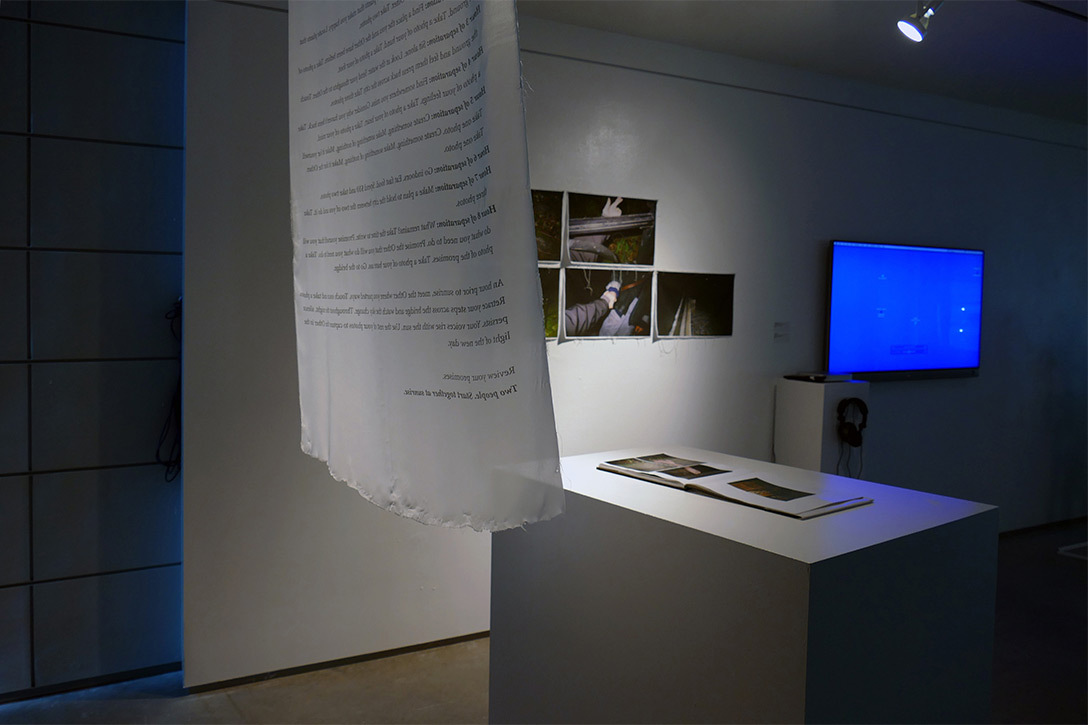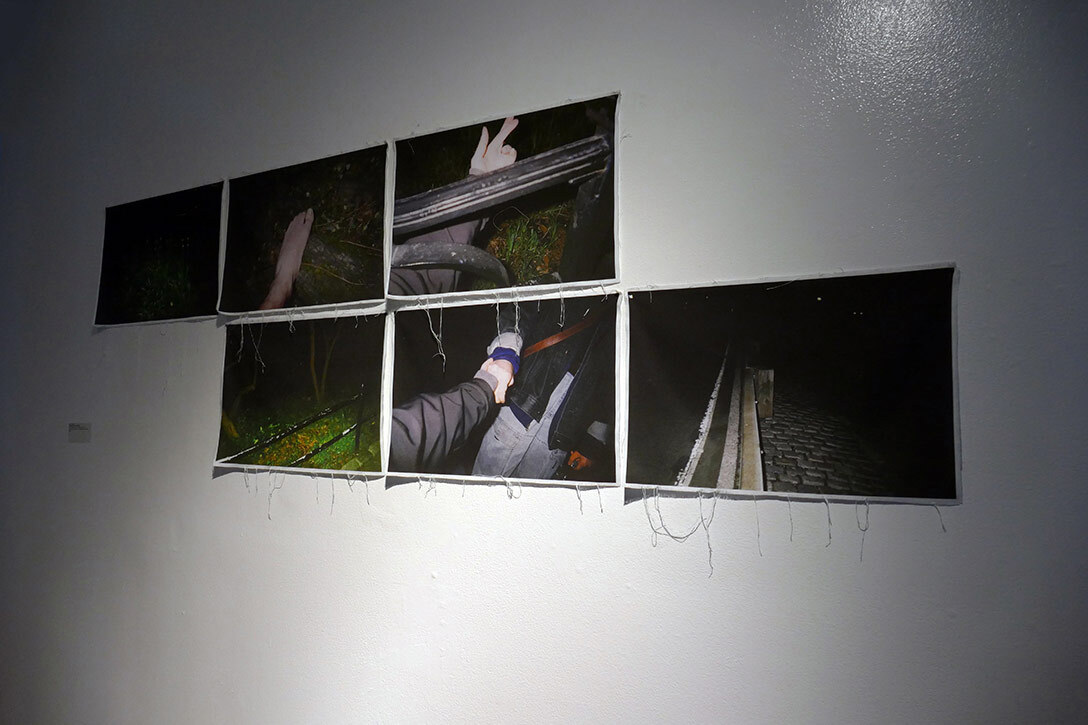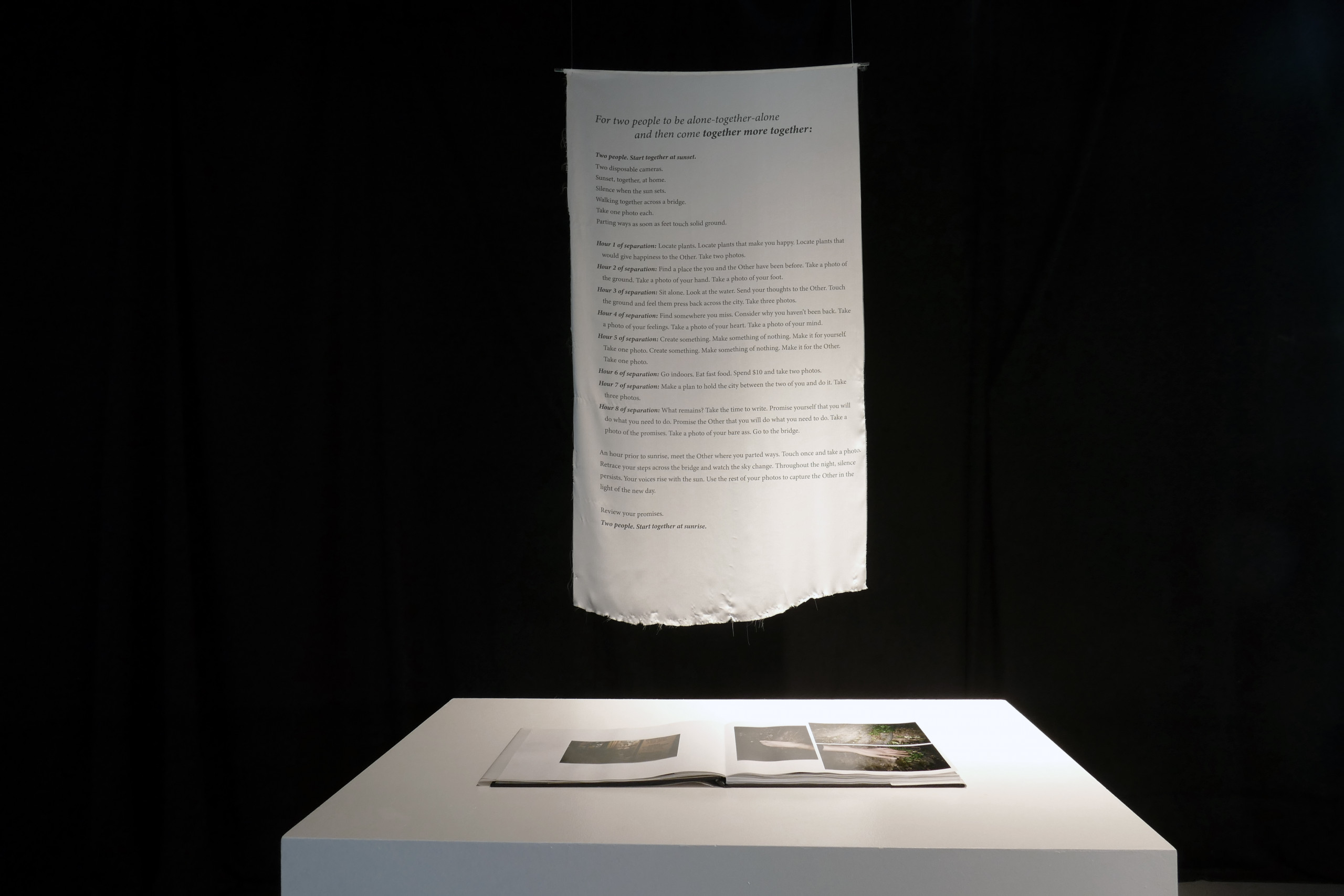Together More Together is a silent, audienceless performance for two based on a score composed by digital arts student Holly Adams. The piece begins with two people crossing a bridge at sunset, then parting ways and documenting their separate-but-synchronized night with disposable cameras. Adams performed the piece last spring with their partner and in the fall presented artifacts from the work—fabric prints of photos and the score, and a book of snapshots—in an installation.
Linda Lauro-Lazin: Why don’t we start with physicality and the body. What does physicality have to do with togetherness?
Holly Adams: For this work, I was thinking about how I have depended on the idea of being physically with someone as the main part of “togetherness.” But togetherness is really built on emotional connection, and even autonomy. I was thinking about how I could construct a set of circumstances where two people could be thinking about each other, and be in vaguely similar situations and spaces but not physically together, and how that is “together.”
LL: Let’s talk about communication, radiating feelings across the night—it seems like you’re researching how emotions are expressed over time and space.
HA: I try to send positive energy to people if I know they need it. I was thinking about that emotional telepathy—when, in the score, we’re considering certain things at the same time of night and performing similar actions at the same time, it’s like a conversation, a telepathic emotional conversation. I made this piece to allow myself to consider those emotions and those thoughts very honestly, and the score is a set of steps to do that.

LL: Even though it doesn’t have any electronics involved in it, I’m going to call this an algorithmic piece. That gives it an interesting underpinning—but that’s not all I love about the piece. I also appreciate its tenderness, its meditative tone, and its poetic quality.
HA: One worry that I had when I was first showing it is that people would see only the tenderness or see only the romance, especially as I am coming from a place of new media—I don’t know the last time I saw a super-romantic new media artwork. I’m glad that the tenderness is there but that it doesn’t overshadow the content that I’m trying to put across: that we should all consider our dependence on one another and how we need to depend on ourselves too.
LL: This performance comes from a personal, intimate place, but the work itself is more universal.
HA: From seeing the installation, I would hope that people would want to do it, and think about who they would do it with. Or consider people they know who are in very tight relationships and how this might benefit them. I want people to see how they can reconsider and recontextualize the actions in their life and how doing things that you might do every day, but performatively, in a structured way, can allow you to come to new conclusions about yourself and the people around you.
LL: You could formalize that. You could create a shared experience that was more communal, with multiple participants. Let’s talk about form a little bit. For the installation, you created a kind of contemplative space for the documentation of the work. It’s almost altar-like. Was that intentional?
HA: Yes, I wanted the score to be the biggest thing in the installation. That’s why I printed it on fabric and had it hanging from the ceiling. I wanted it to be the focus more than the book or the photos. It was also important to give the viewers space to read and consider the score on their own time.

LL: I was curious about the decision you made to leave threads of fabric hanging from the score and the photos on the wall.
HA: I was thinking a lot about honesty and vulnerability. This piece isn’t supposed to be clean. It’s more raw than that. I was trying to show the combination of how raw it is and how important it is to me.
LL: What’s next for you?
HA: I want to reperform the work—I think it’ll always lead me and my partner to something different. I want to continue with performance as a medium, thinking about how that can integrate more with my use of technology. I’m thinking about how to convey things with as little as necessary to get my point across, and with that simplicity, to allow other people to find something that they need within the work as well.
